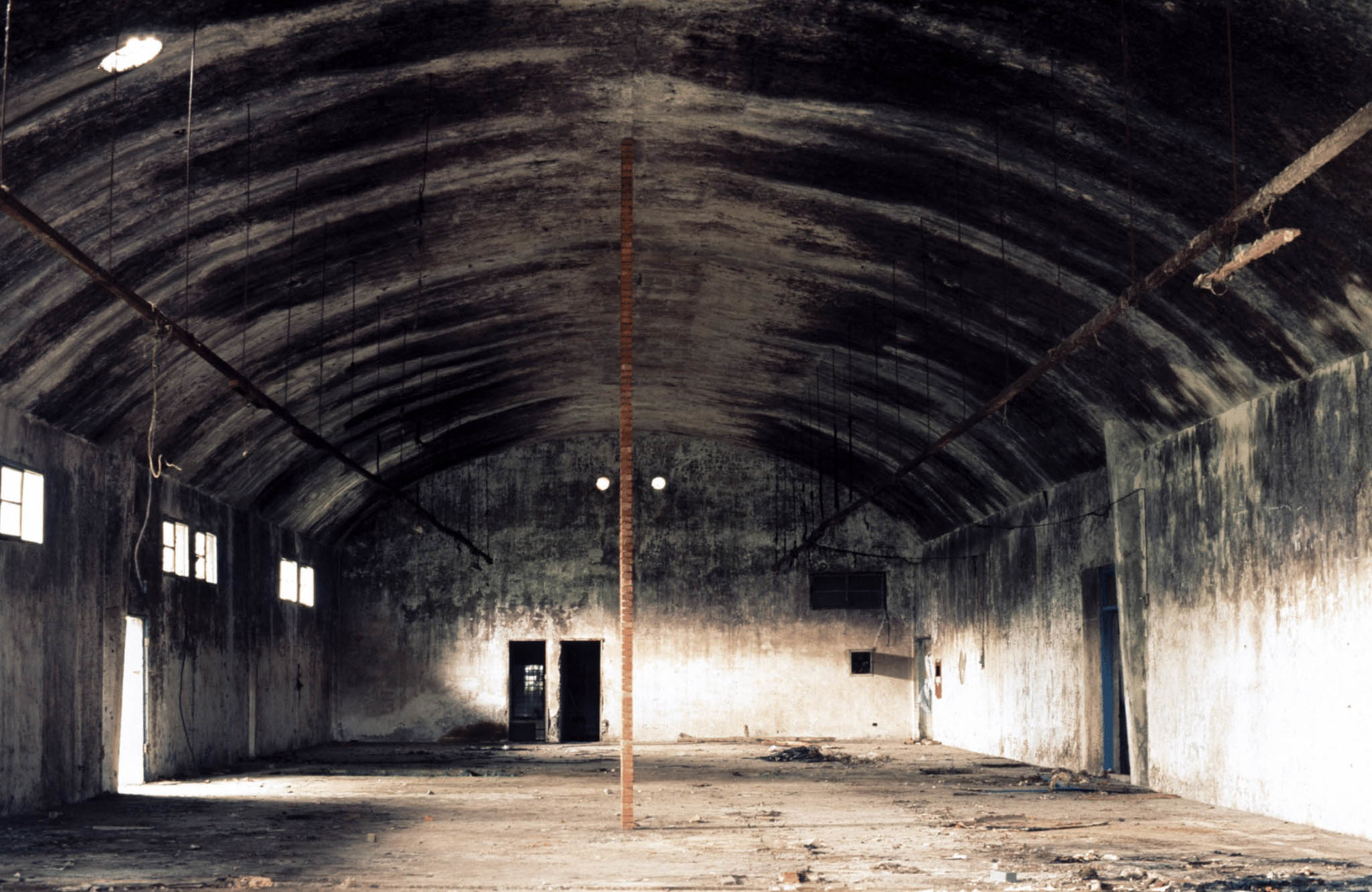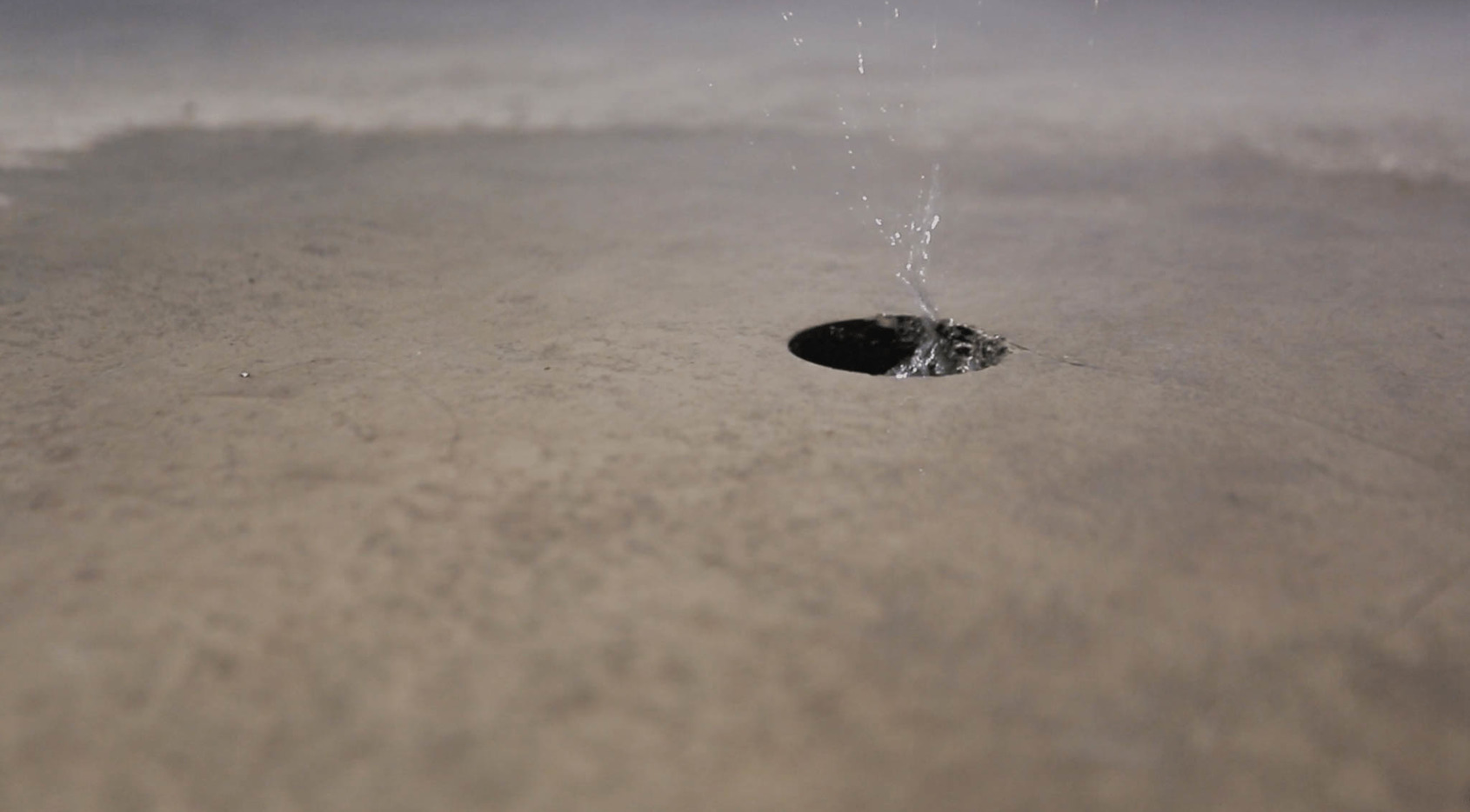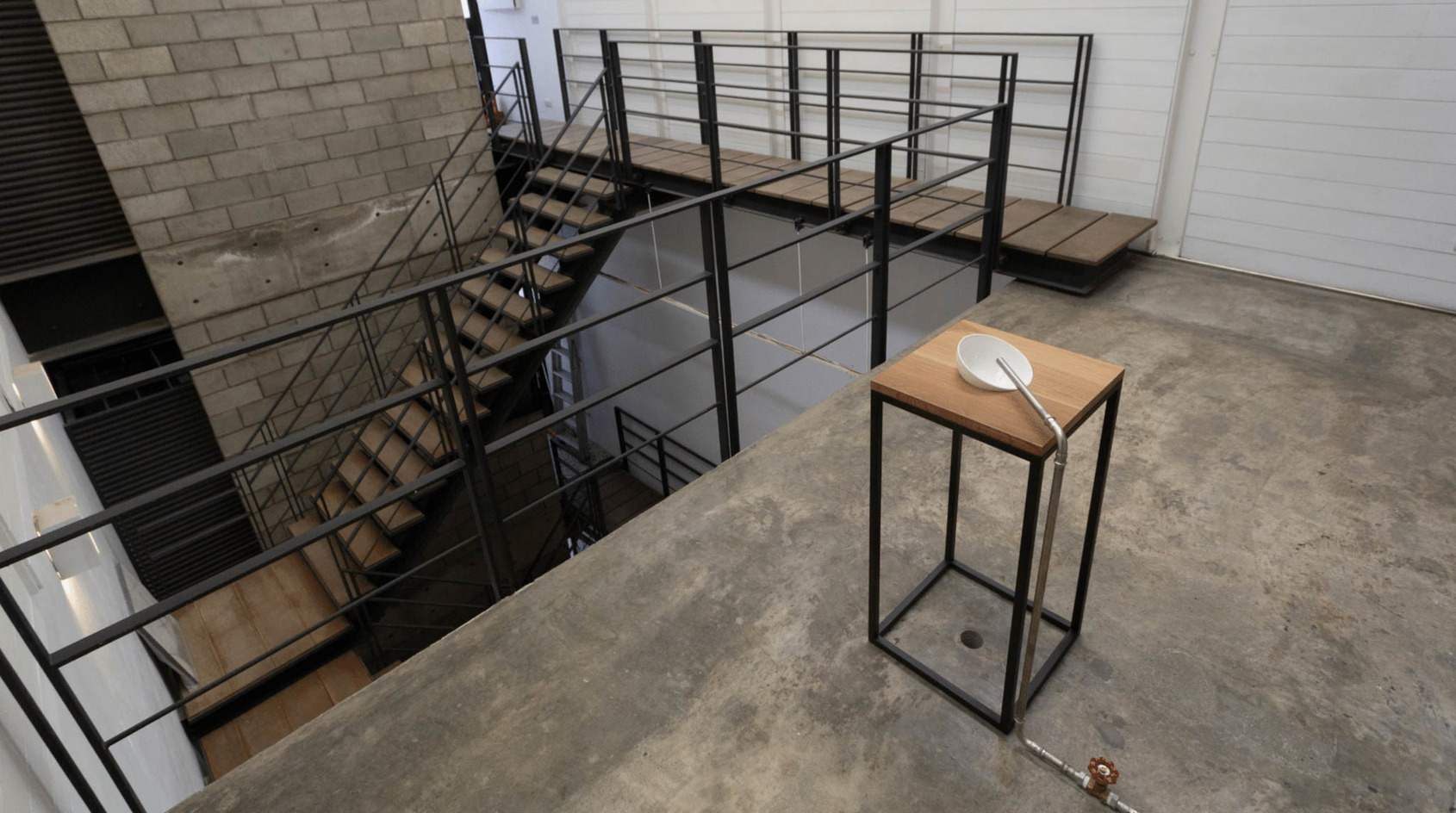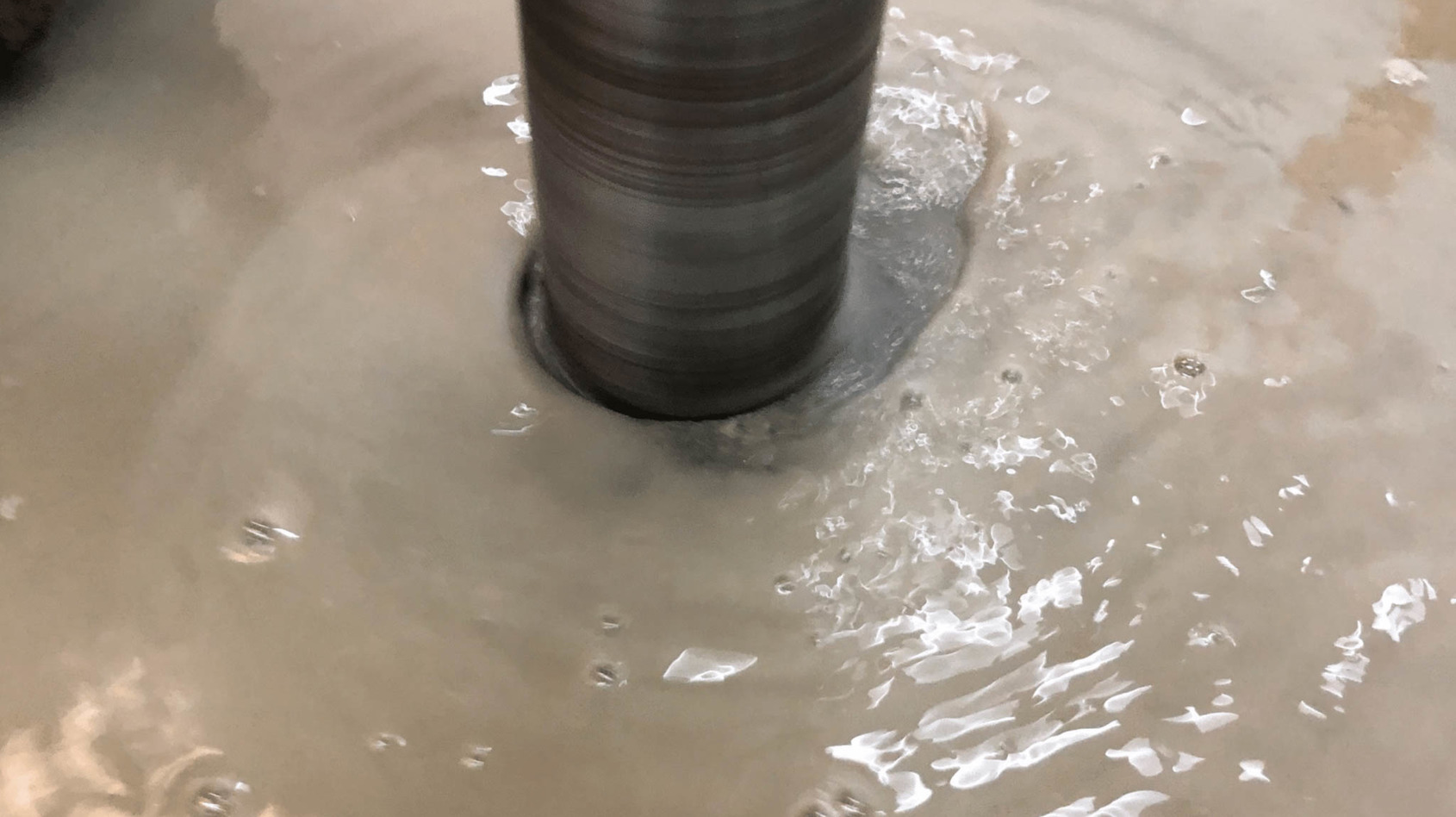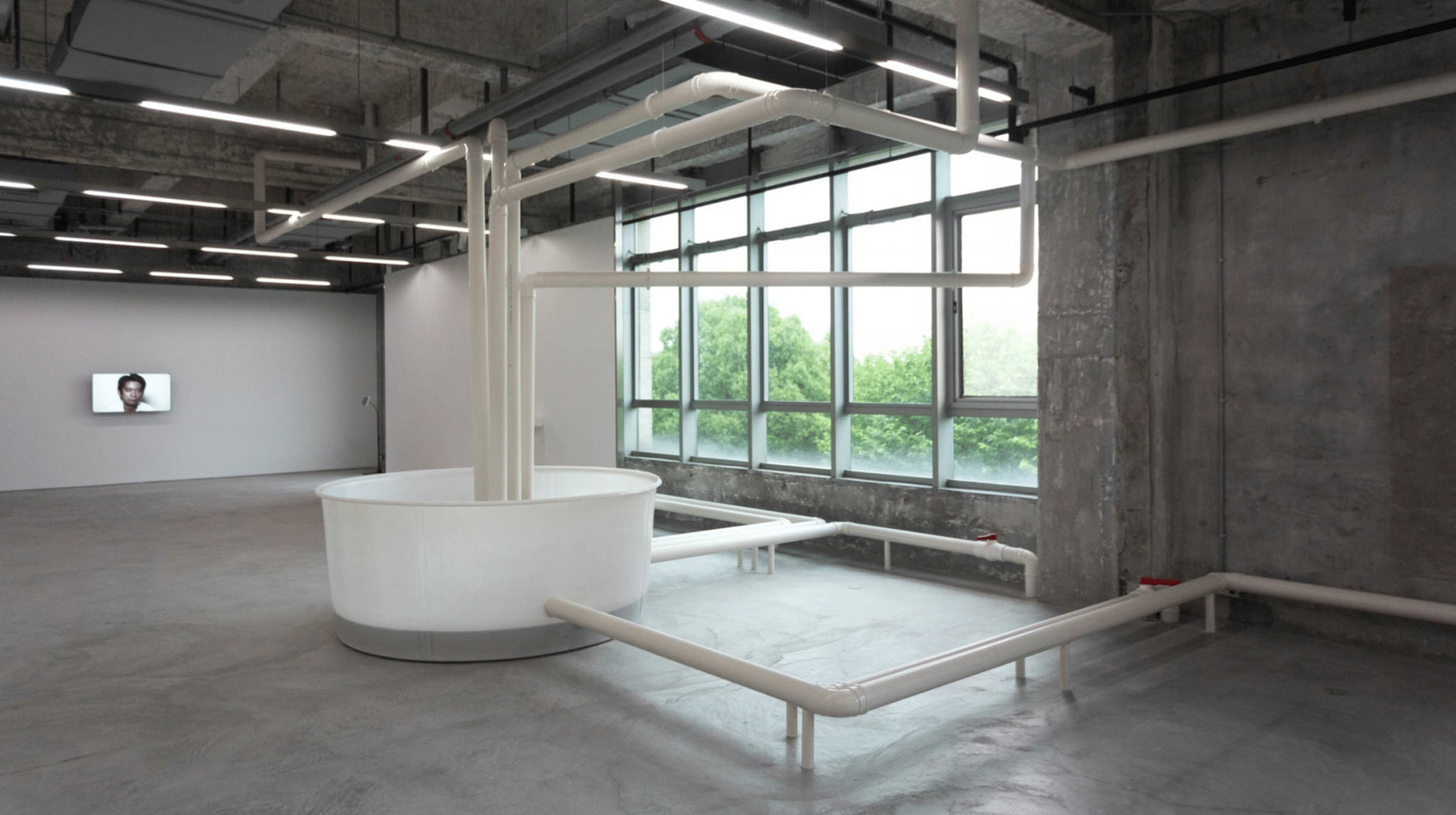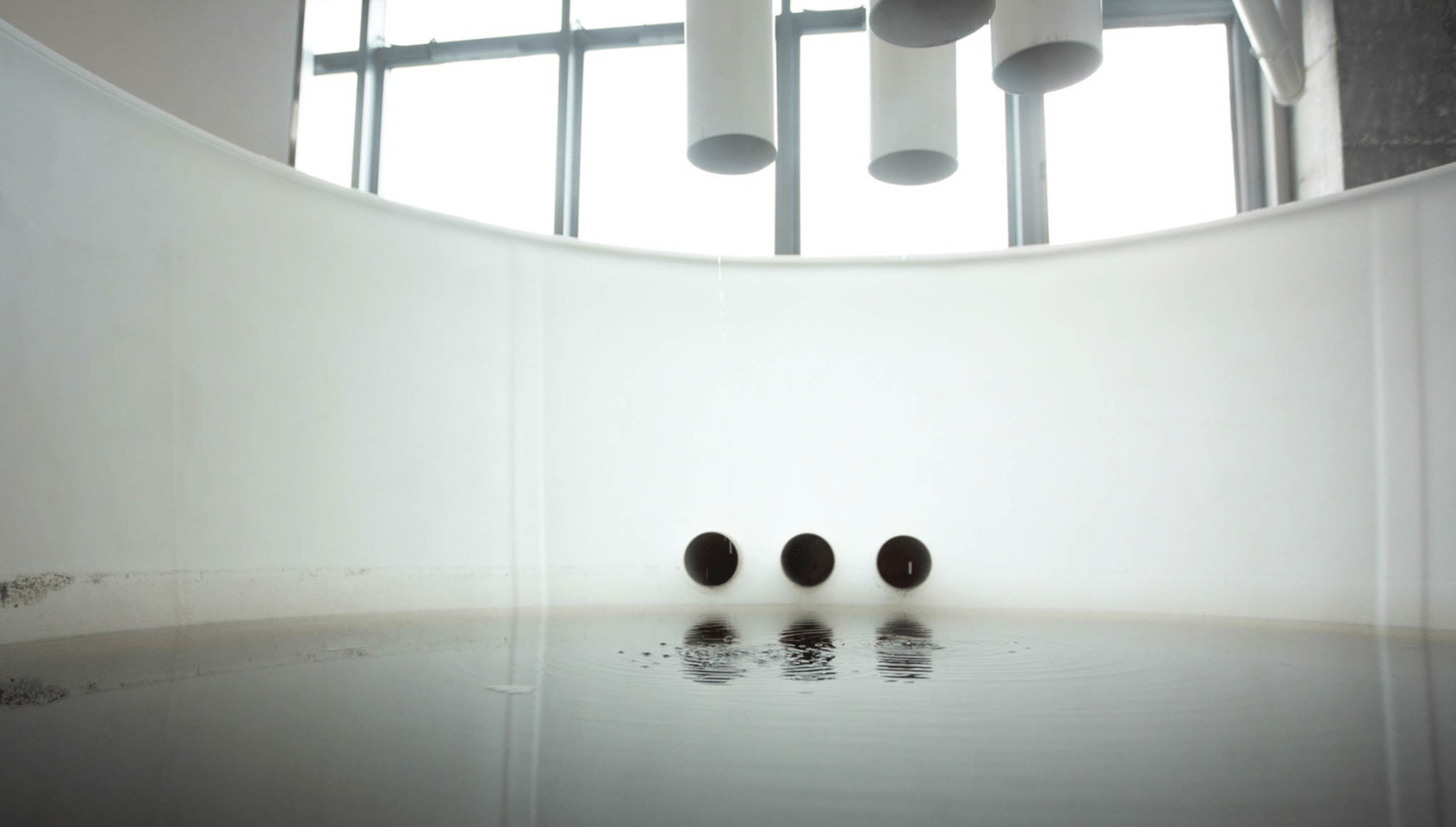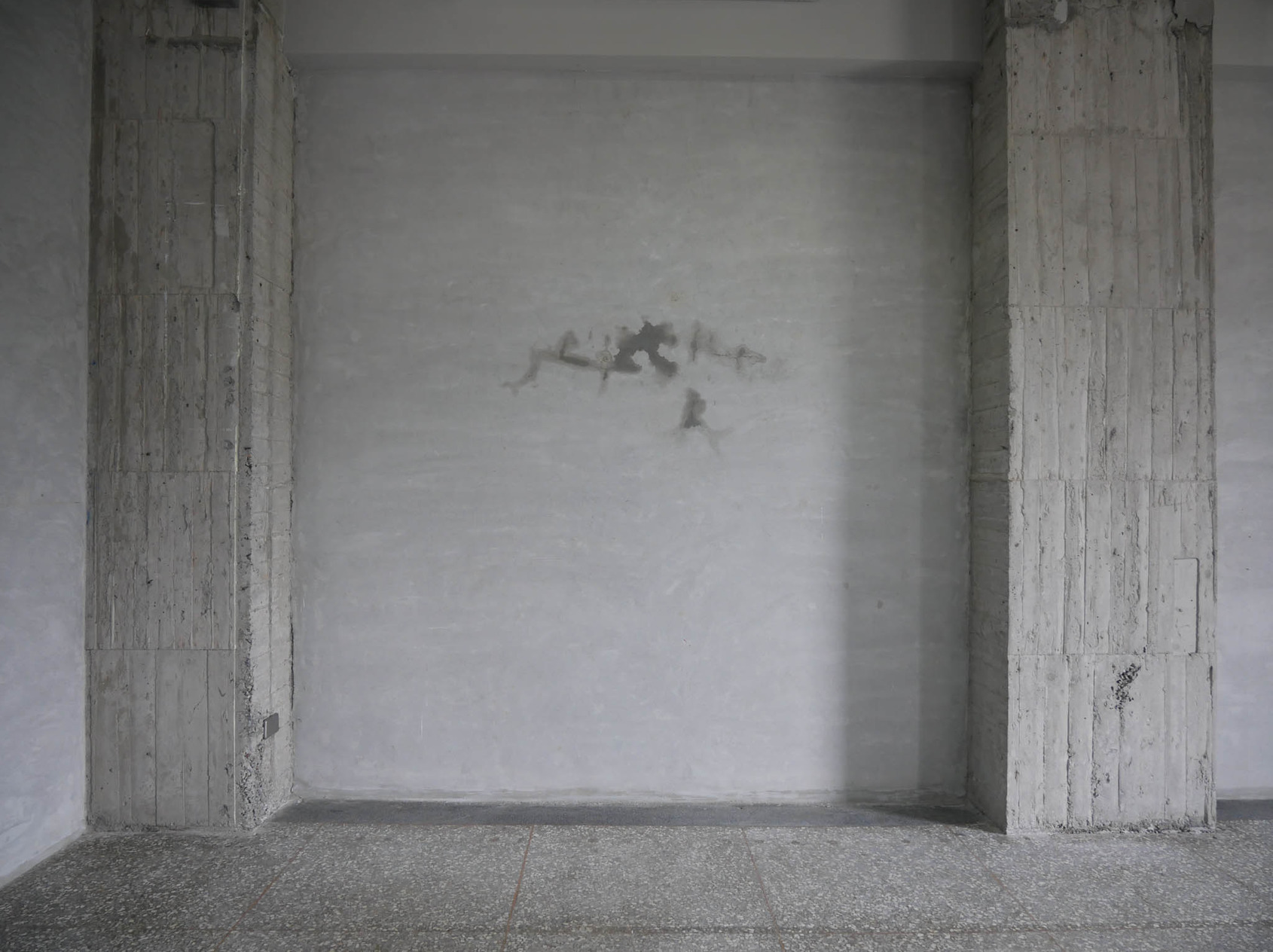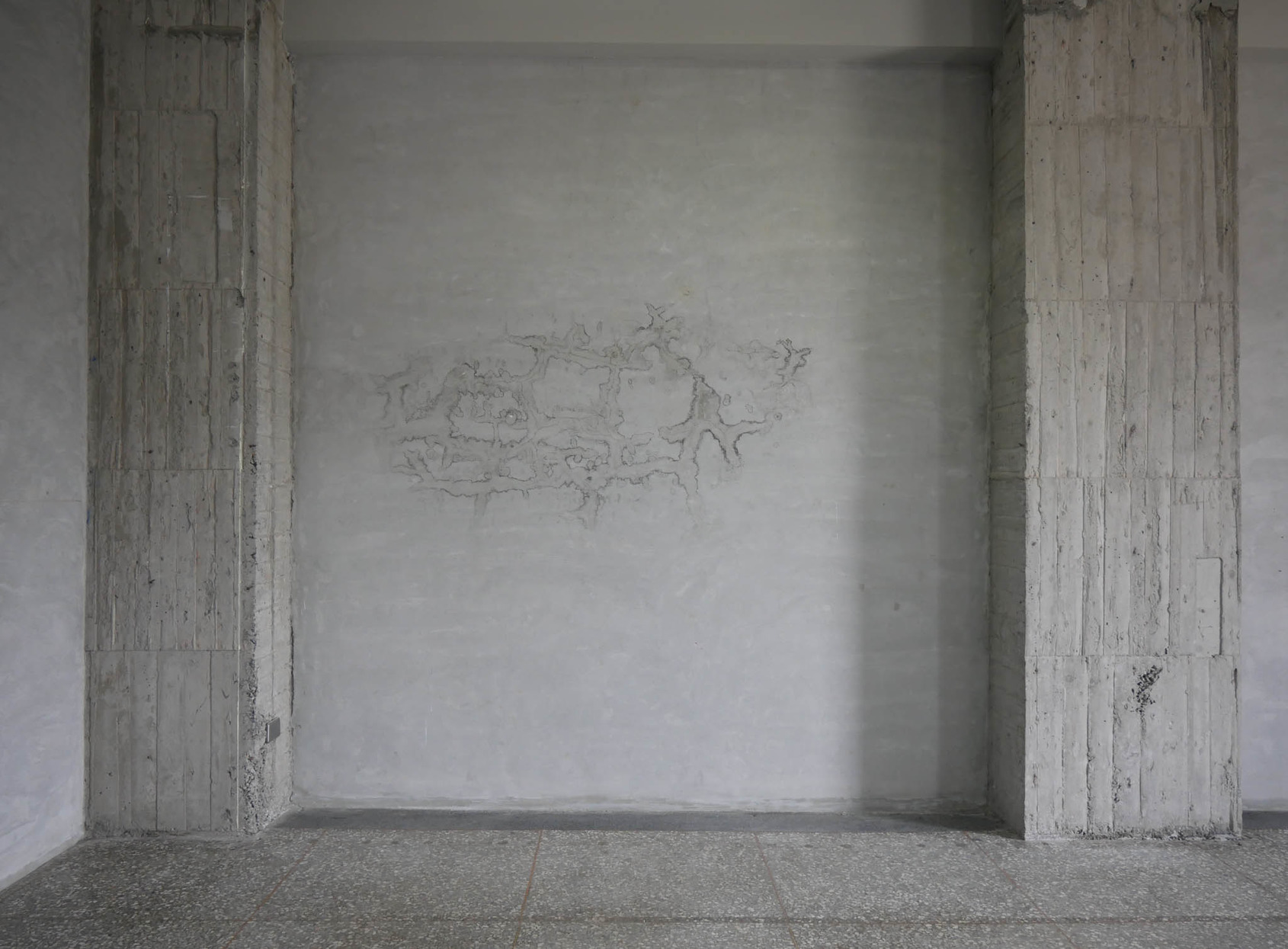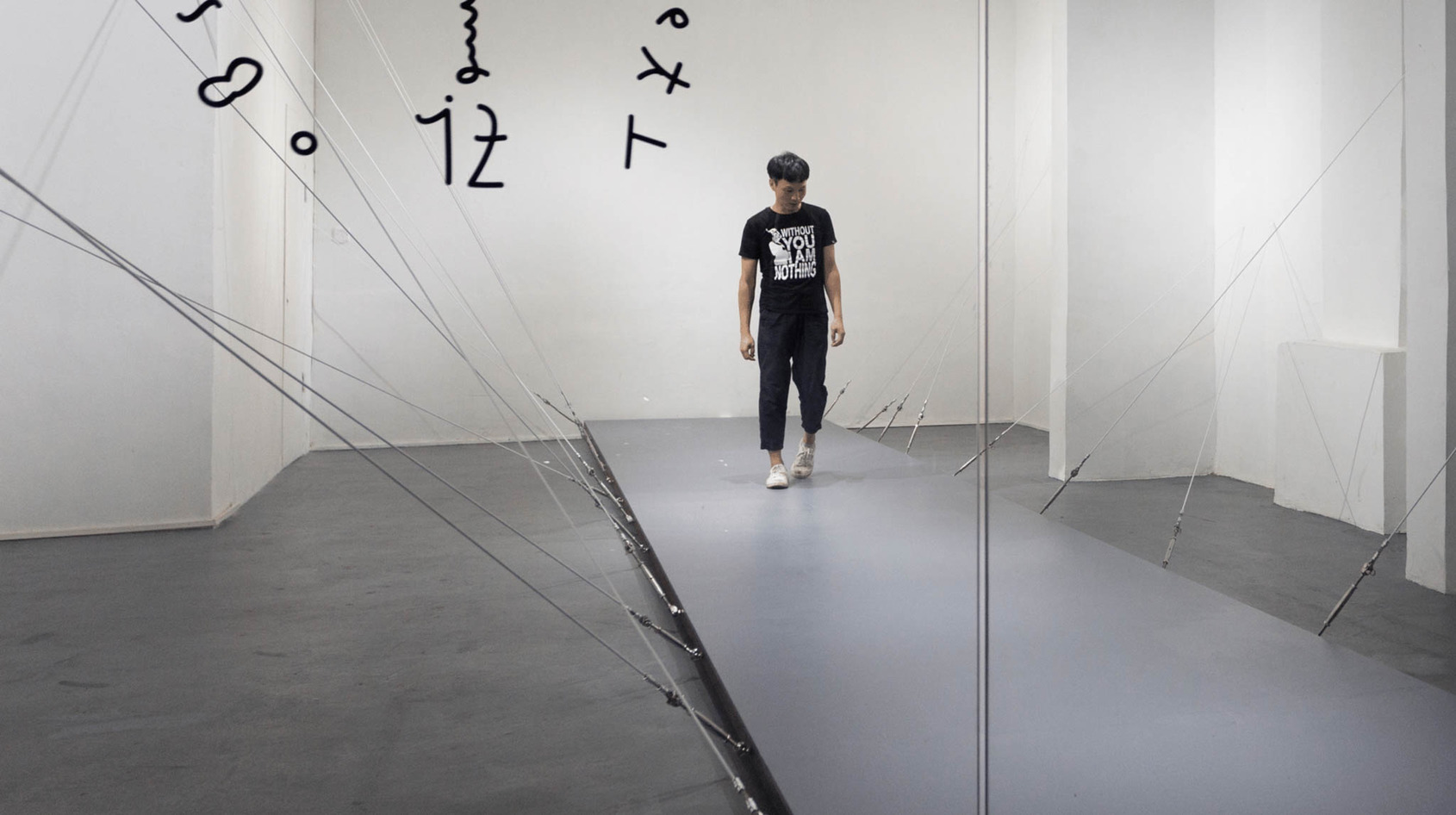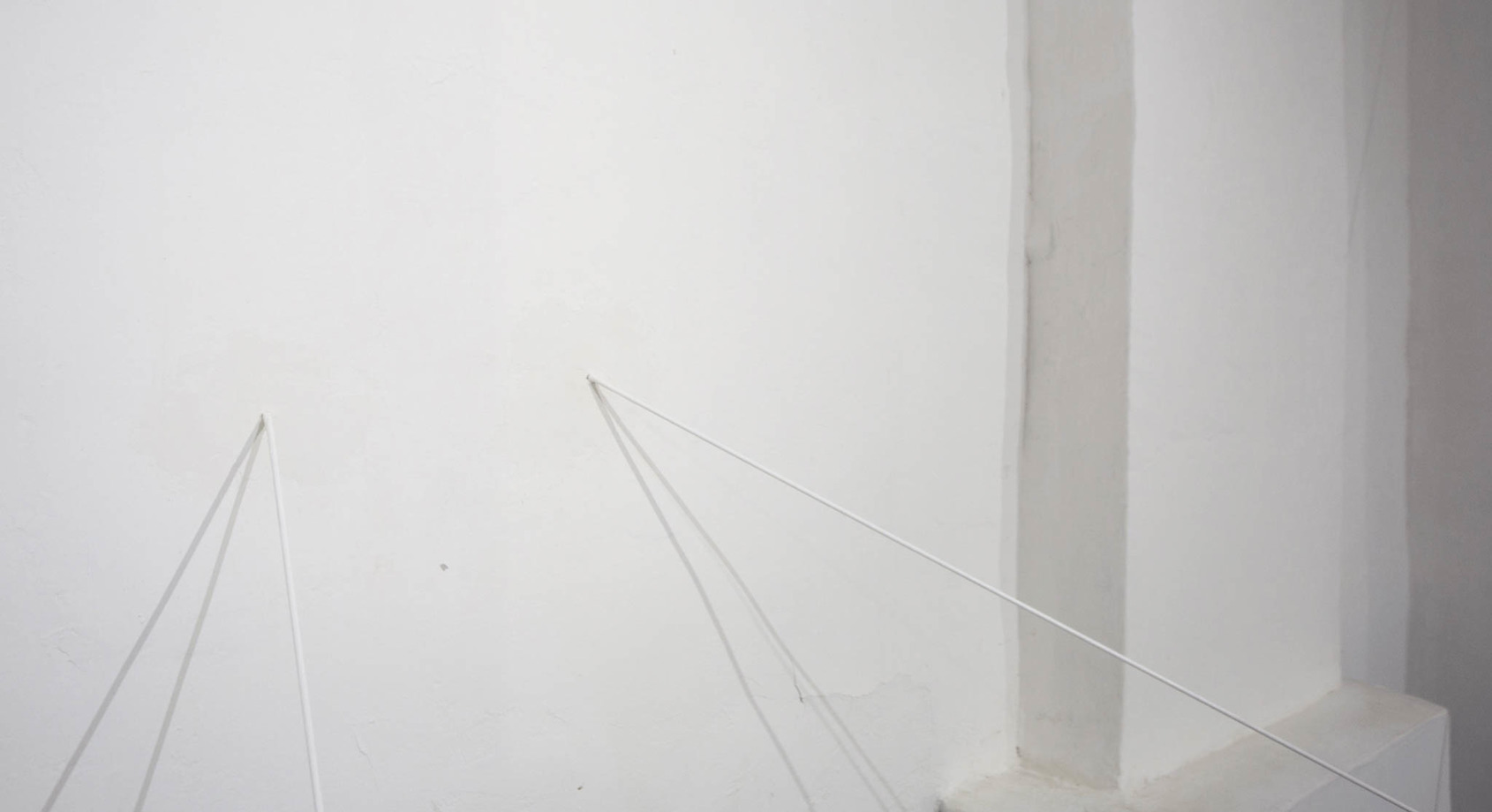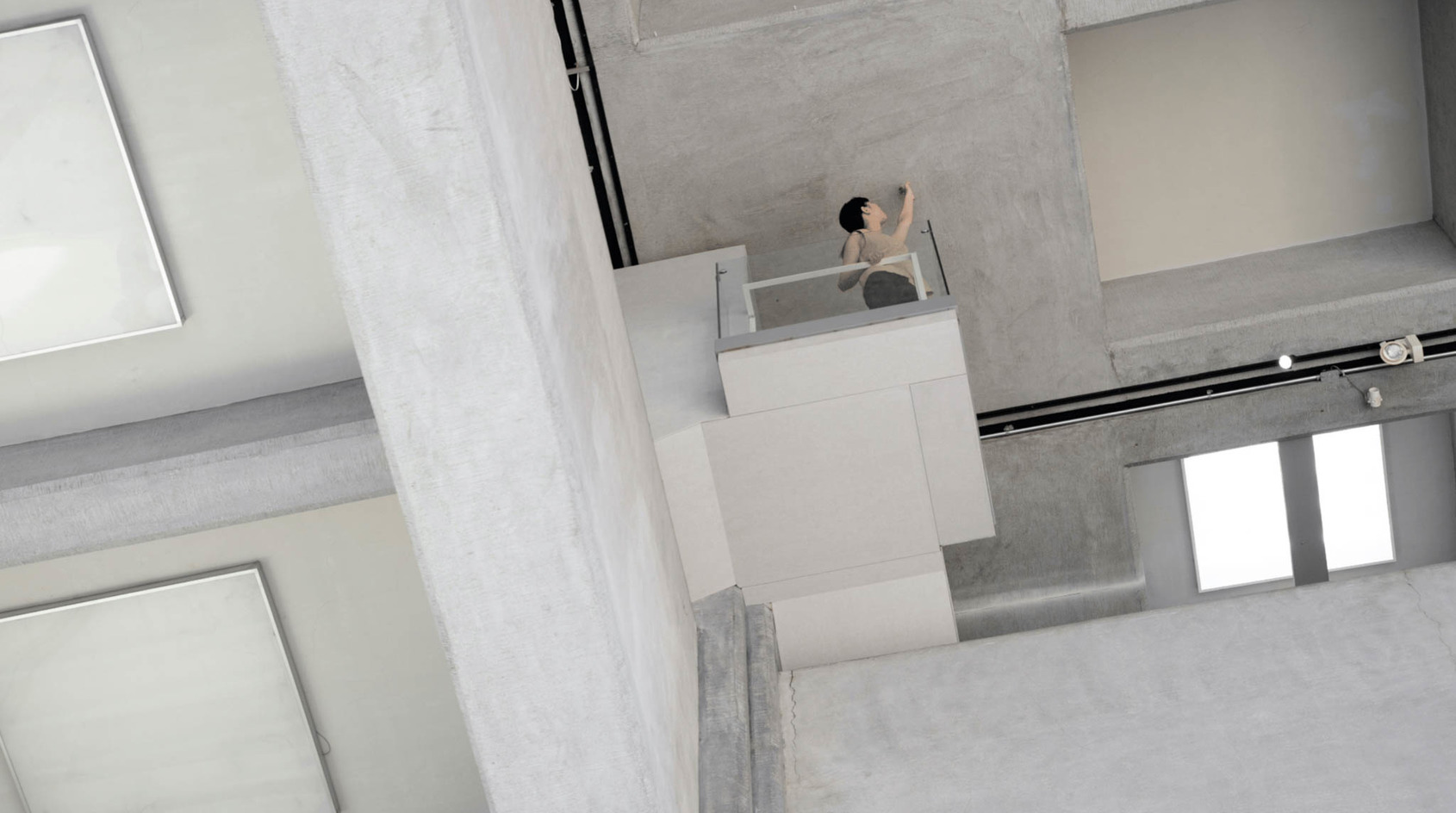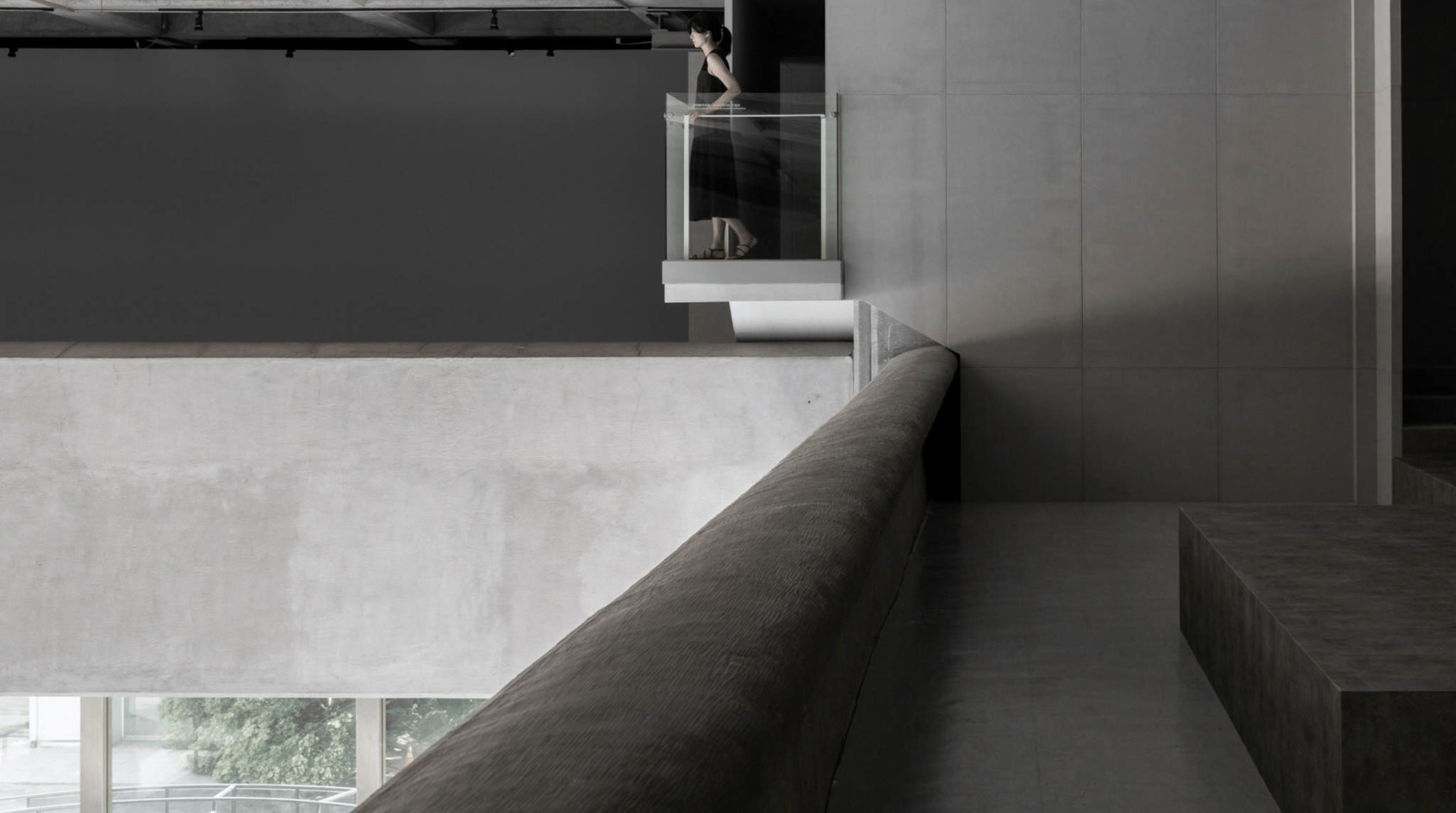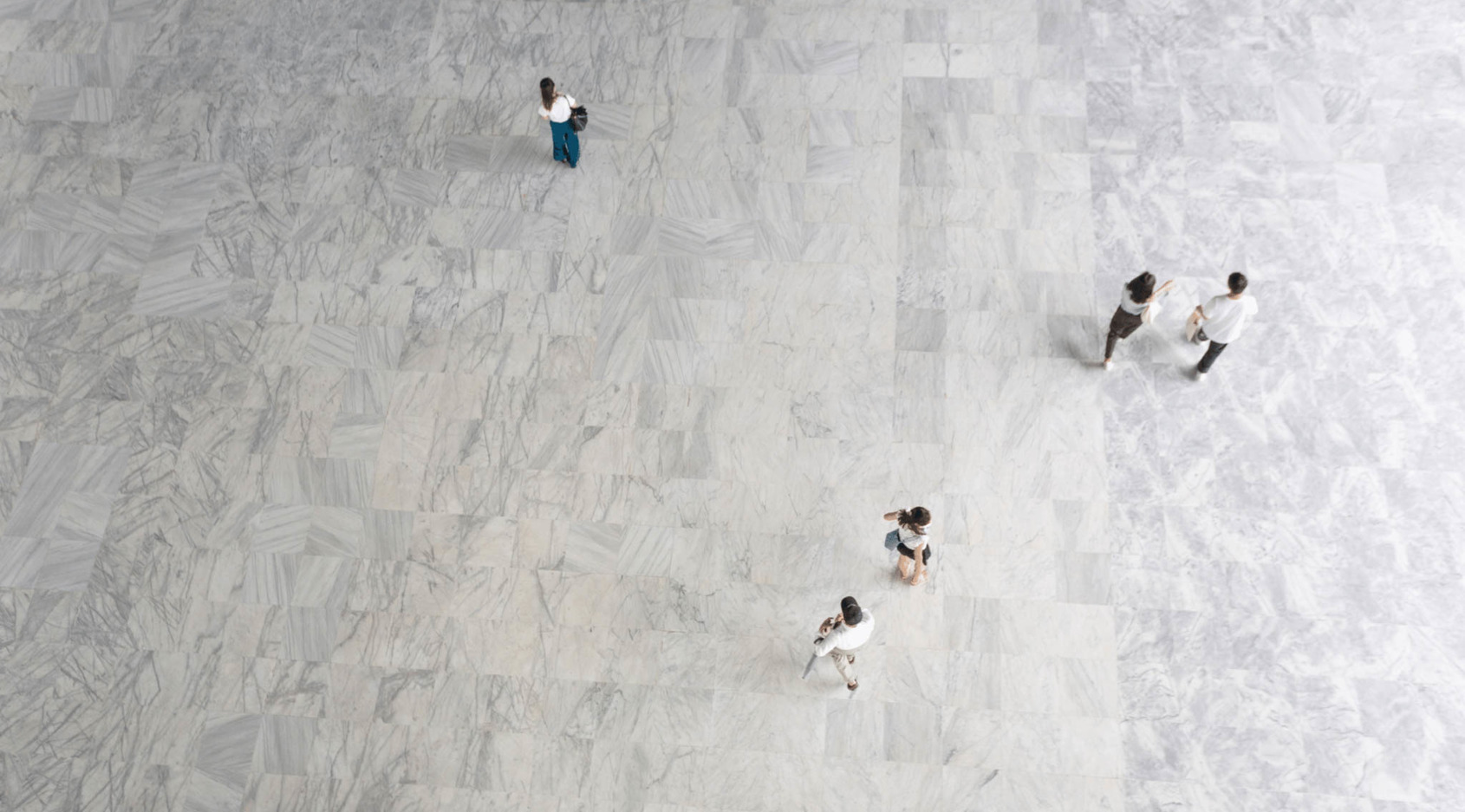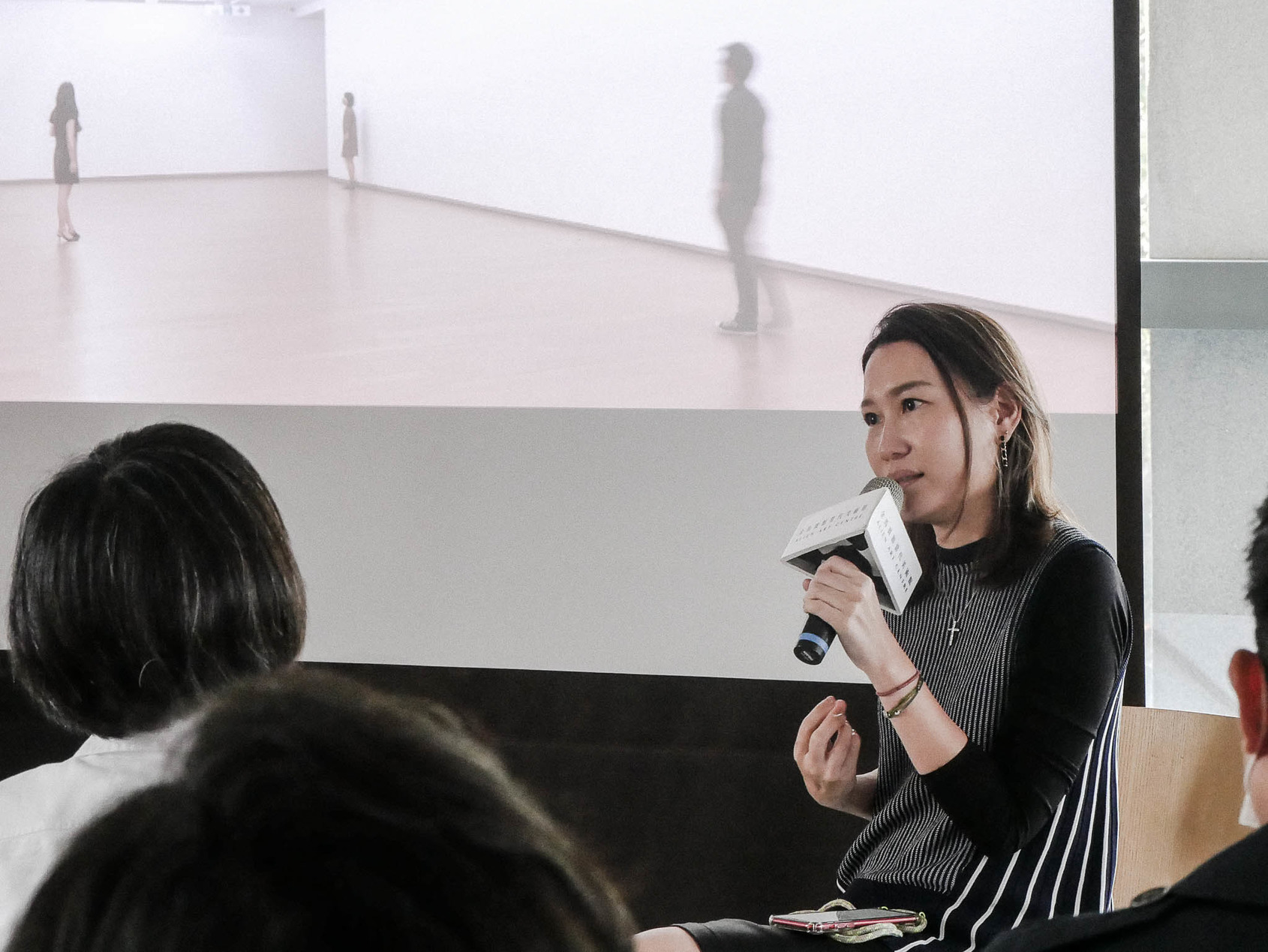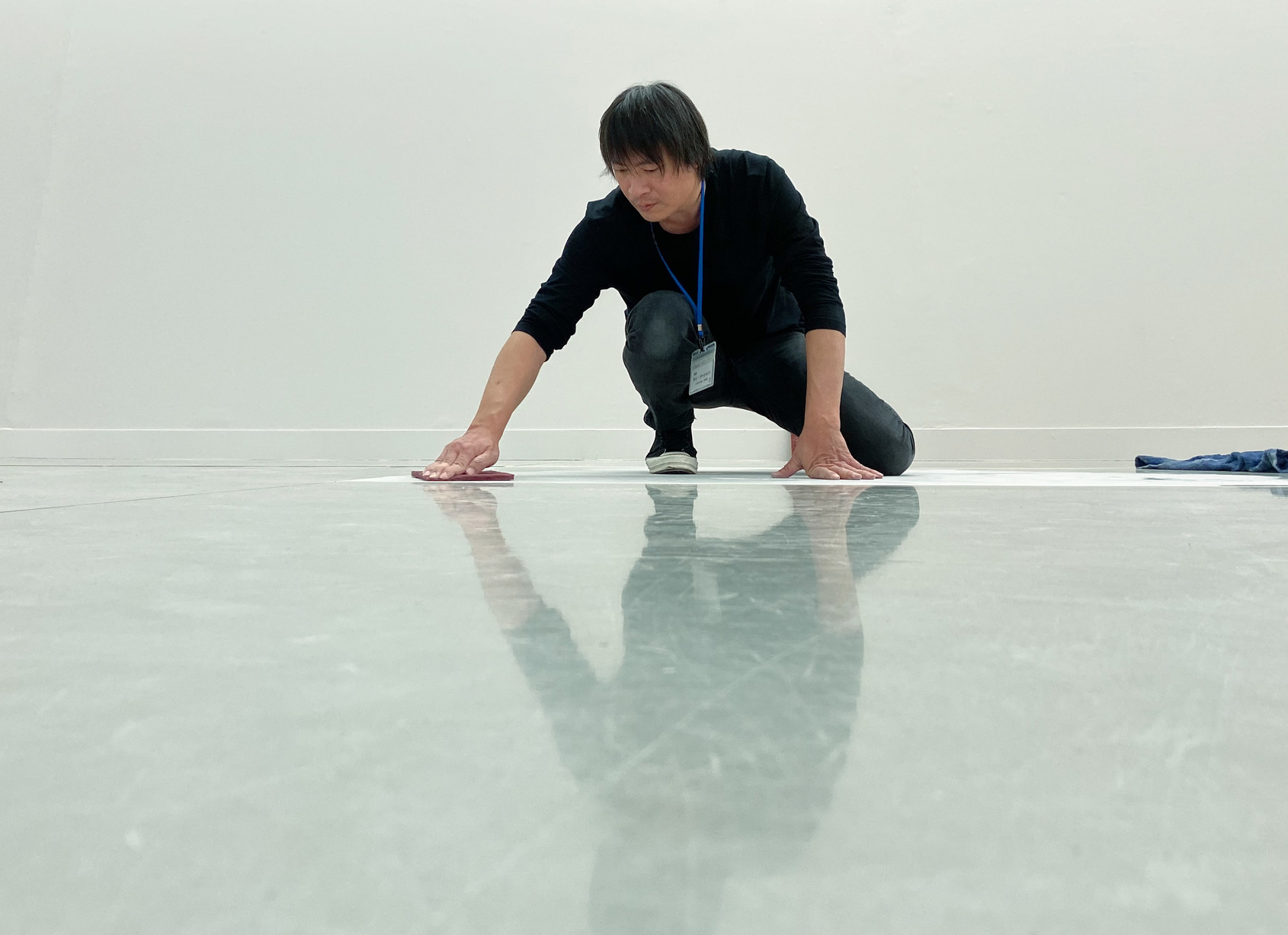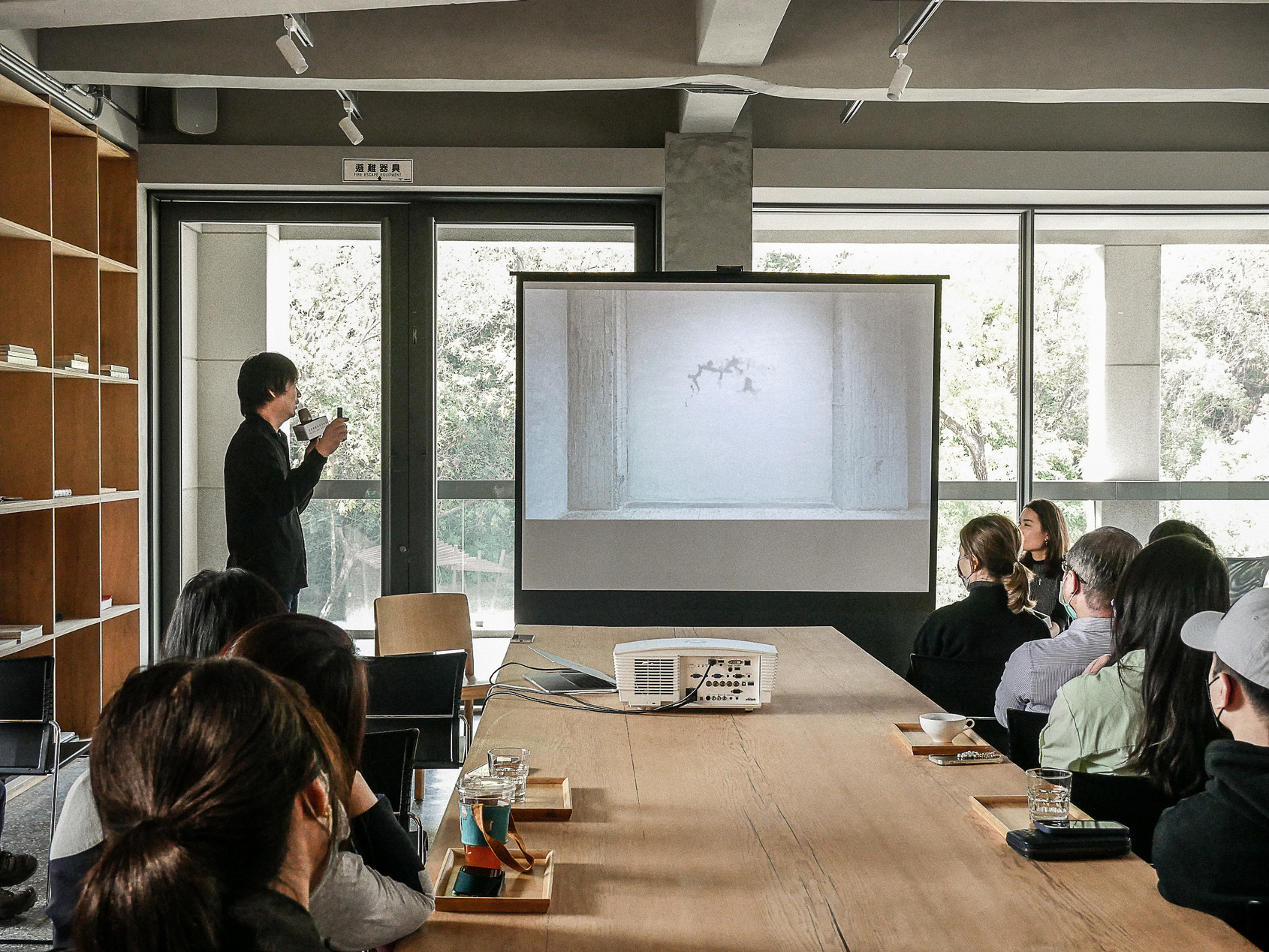※ This text is the recording of a seminar, where artist Lai Chih-Sheng and ART BASEL Taiwan VIP representative Jenny Lee had a discussion at ALIEN Art Centre.
In 1996, “Vertical I” was a stack of similar-sized bricks. When the stack hit the ceiling, there happened to be exactly one hundred bricks. These bricks were not absolutely vertical or horizontal, so I corrected them with cement. “Vertical I” was only shown for a little over a week, when it was blown down by a typhoon.
Lai Chih Sheng, Vertical I, Courtesy of the artist.In 2019, I had a chance to make another vertical work at the CRANE GALLERY, a four-story exhibition space, where they gave me the stairwell. I thought: if I make a work related to stairs, it should be about “vertical.” It should also be bright so as not to be dangerous. So I wanted to use “water” to do this: on every floor I drilled a 5 cm hole in the same vertical position, so that a drop of water passing through the four floors would only hit the ground on the first floor. So there was a little pool of water there, from the water dripping down every three or four seconds. There was a 70–80% chance for the water drops from the fourth floor dripping all the way down to the first floor. Along the way, some would be caught by visitors, and some might be blown off of course, like by the airflow from someone opening a door.
When I experimented at home to prepare, I used droppers, syringes and other devices, trying to create the largest drops of water. Finally, I made a hole in a bowl and let the water slide slowly from the edge which formed the fullest drop of water. However, about an hour after trying out “Vertical II” at the CRANE GALLERY, it suddenly stopped dripping. “What’s going on? Is the water valve not accurate enough?” The situation did not change after replacing the valve. Later, I discovered why. It turned out that the poor water quality in Kaohsiung quickly builds up scale, blocking and damaging pipes and valves. So I installed a water purifier higher up, to ensure that the dripping water stayed clean. Even if it dripped on a viewer, I felt okay with it. Later, on the monitor, I saw people playing with the water and trying catch it with their mouths.
Lai Chih Sheng, Vertical II, Courtesy of the artist.Lai Chih Sheng, Vertical II, Courtesy of the artist. Jenny: Is that what you expected to happen?Lai: Because there is a puddle of water on the ground, you may simply think there’s a leak, so some people would not see this work. Some people, when reaching the third or fourth floor, would start wondering about the dripping water. They looked up and discovered that it was actually a work. That does not necessarily require you to appreciate the work when you already know “Vertical II” from the first floor. Even when small and having little chance of being seen, the process is quite clear.
I hope that galleries and art museums will be willing to try such works. I will also gain their trust and more opportunities to develop such works. For instance, if I drill a hole in this big table, it will not collapse. They were convinced, not to mention that I can fix it back to how it was anyways.
When creating “Vertical II,” I knew that there might be wires in the floor, and I didn’t feel okay with telling them I might hit one. So I used a detector to prevent that. However, the CRANE GALLERY is a 70-odd-year-old building with floors of 36 cm thick, making it hard to thoroughly detect all the wires. Due to incomplete detection, I did hit a wire when drilling on the fourth floor. I kept getting shocked as I was responsible for mopping up the water.
However, the old plumber was quite clever. He knew that if I would drill into a wire, water will run into the pipes and disappear. So he said, “Ah, I drilled into a wire.” I slowly responded: “Yes?” The electric shocks kept hitting us as long as we were drilling. Sure enough, a socket on the left did not have any power anymore, but fortunately it was in a later addition on the top floor, so it was easier to repair.
Lai Chih Sheng, The installation process of Vertical II, Courtesy of the artist.This work is “Stop by” exhibited at Edouard Malingue Gallery in Shanghai in 2019. When they gave me this space, the large glass surfaces and industrial design gave it the look of an office building. My first thought was: if the air-conditioning blows towards this window, it should form some condensation, a little dreamy. Later I found that, because of the high temperature differences between winter and summer in Shanghai, all glass windows are double-layered with a vacuum in the middle, so no condensation forms at all, and I had to change my approach.
Although these white water pipes were visible in the space, I could not use them. The water in the pipes would pass through the exhibition space without being seen. So I cut open a water pipe, guided the water to the center of the exhibition hall, and then had it run back to the place where it was supposed to flow, thus changing the wastewater channel. Then, I ordered a big bucket on Taobao and asked the building’s plumber to modify and install a water diversion pipeline. After several observations, we learned that most of the water comes from the roof. I expected the water would be clean, but it turned out to be quite opaque from the asphalt-based chemical coatings on the roof. I also set up a water valve to control the flow and speed of the water.
Lai Chih Sheng, Stop By, Courtesy of the artist.Lai Chih Sheng, Stop By, Courtesy of the artist.I wanted to let the water “stop by” before leaving. Someone asked me about the meaning of this work, but I’m not so sure myself. Perhaps the constant going from exhibition to exhibition is a kind of “stopping by” in itself. Looking back, people only stay in this world for some time. They are probably all similar ideas.
The same goes for “Stop by”. The water wasn’t going to stay in this space, but now it stays in this space for a little while longer before flowing on to where it should go. In addition to changing the water’s course, it also generated new sounds in the exhibition hall. It had been raining in Shanghai for a while, and now the sound of water could be heard inside the exhibition hall. The roof of the Edouard Malingue Gallery has a special shape, quite slanted, so that water concentrates at that water pipe, making it a catchment area.
“Stop by II” is a work exhibited at the ALIEN Art Centre, a contemporary art museum. This time, I wanted to make the water stay longer on a wall. Water comes from moisture in the air, such as condensation when cold air dehumidifies and cold and heat exchange. I poured water back onto the wall and made a small reservoir inside. CEO Yaman Shao gave me a lot of trust and support for the creation of this work.
You may have seen this work just now and noticed that it looks different from this photo because of the water running around in it. The original water outlet was drawn down from upstairs, and I made a hole as big as a water pipe from below and bent inward so it seeped into the wall. Actually, when I was making this work, I had no idea what it would look like. After all, the structure inside the wall would determine how the water would flow out. In the meantime, beyond my control, these traces have undergone new changes.
Lai Chih Sheng, Stop By II (shot in 2020.10), Courtesy of the artist.Lai Chih Sheng, Stop By II (shot in 2021.02), Courtesy of the artist. Jenny: Every time I look at this work, it’s a little different. I don’t know how you feel when you see this exhibition. To me, this exhibition is a little like waking up after an afternoon nap and seeing some part of your house with a fresh eye. For instance, “Stop by II” reminds me of the traces of water stains on the walls of my granny’s house in the countryside. Or the traces of things retreating when the season changes. The electric fan mounted on the ceiling, or “Tshit-Thô” created with Cloth Masker. That gives you a similar feeling.Lai: Actually, creation is sometimes like looking for trouble, leaving some useless traces. Whether beautiful or not, those are traces. The most important thing is to leave some traces that have feeling, or are at least special, to trigger people’s imagination.
Lai Chih Sheng, Canton Flower Bridge, Courtesy of the artist.Lai Chih Sheng, Canton Flower Bridge, Courtesy of the artist.This is an alternative space in Guangzhou called Observation Society. It’s a good alternative space in China. Their community is called Suihua New Village. Suihua means “flower.” There is no Suihua Bridge (flower bridge) in the village, so I’ve built the Canton Flower Bridge there. The bridge was about 1 cm above the ground, suspended by steel cables. Not every wall we usually see is solid, there are all sorts of veins running through them. To meet the original design functions of this space, the kitchens, bed rooms, living rooms, toilets, etc., all have wiring and pipes with outlets. I investigated this space beforehand. It was built as a home, but later became a barber shop. I thought, maybe I can find out all the original pipelines. I could take out those electricity wires and water pipes, and then use them as steel cables to support the bridge. It’s like a suspension bridge, but also a bit like a boat. The swaying when people walk on it makes the surroundings feel like waves.
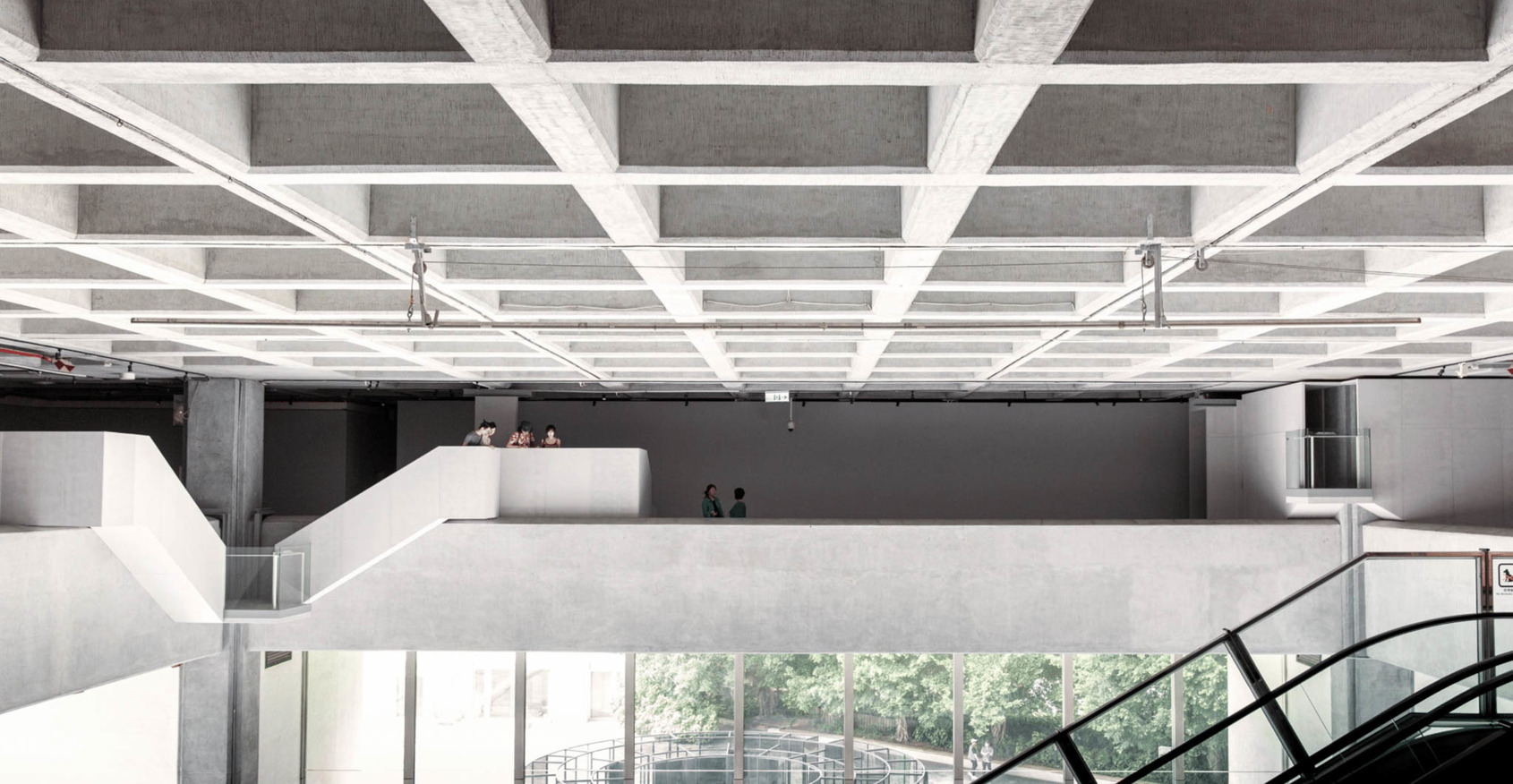
This is “Closer,” currently exhibited at the Taipei Fine Arts Museum. I don’t know if you have been to Space C on the third floor before? It’s different from the space that we’re used to when viewing exhibitions. So I kept thinking about how I could make a good work there. First, I thought maybe if I could touch this heavy and complicated lattice beam (ceiling), I would need a step or a ladder to reach it.
It took nearly a year to turn this idea into reality, the process was so difficult, and it took a lot of preparation. It took so much effort to break away from the original walking route and touch the ceiling outside of the railing, which made me ask myself whether this idea was really worth doing. For instance: After the work has been completed, it will definitely resemble a balcony, which could be boring.
However, in general, balconies stick out. My balcony looks inward. There is a different quality, or essence. And I’ve been thinking, with observation decks the light source generally comes from the sky above, while here the wind and light will come from the hall below. So things are flipped around and there are new differences here. In short, it took a long time to work this one out, and a lot of thinking and checking.
Lai Chih Sheng, Closer, Courtesy of the artist.The main idea of this work is: how to get closer to light and wind. For this work, two small spaces are hung outside a wall. Generally speaking, we can see some small spaces like this in church walls, mostly related to faith or devotion. They’re personal and spiritual spaces, like the spaces embedded between two pillars, a bit like big tree trunks and birds or other creatures living up in the treetops.
Then, the hard part began. First, I drew a 3D simulation and calculated the counterweight. The work was not allowed to damage or affect the building. It should be fixed like a rooftop room. There were many technical problems to overcome, such as safety. This work had to be assembled somewhere else to confirm the load-bearing capacity, so it was tested many times in the factory, and finally the technician signed off on a certificate that he gave to me. Another issue was space. Any noise made during construction would be heard all through the museum, loud and disturbing. So we could only work at night every day and entire days when the museum was closed.
Lai Chih Sheng, Closer, Courtesy of the artist.Lai Chih Sheng, Closer, Courtesy of the artist.I suddenly realized that before “Closer,” most of my works were made for professionals. This work would be viewed by ordinary people, so some people may slip and fall, drop their phones, misstep, etc. All sorts of risks had to be considered. In the end, even though the construction could carry 500 kg/m2, I still decided to allow only one person in at a time, to prevent people from accidentally pushing one another over. A nice coincidence turned out to be the loneliness when you walk up there on your own, which adds to the experience of the environment.
I don’t want people to use “Closer” as a place to take a break or play around. So, I had many discussions with curator Anthony Yung. After that, he wrote up an academic discussion of this work and placed it at the very end of the work. After you experience “Closer,” it gives you something to ponder.
Jenny: Many people that view Lai Chih-Sheng’s works find them very poetic. I think this may be related to your works being in and of a certain space, which can revitalize the scene, its texture and the beauty of life. After following his works for a long time, I feel that Lai Chih-Sheng uses gently violent and poetic ways to intervene in spaces. His poetry may be violent, but in the end harmony appears. His works coexist with the spaces, but in the process of symbiosis, the works sometimes disappear into the spaces. Which brings me to the question: Do your works, to some extent, confront the existing art and collection system?Lai: I always feel that reality is the object of confrontation. Systems, rules, or ways of viewing can all be shaken and stirred, adjusted, and these adjustments are where my works take place. If my work is going to be displayed in a different space, I usually create a new work directly, even when it is part of a touring exhibition. There will always be various adjustments to make.
Art Basel Taiwan Representative Jenny Lee Jenny: I will use the word “reading” to describe my state of watching Lai Chih-Sheng’s works. He often uses bricks in exhibitions to create works there. The bricks are like a self-portrait that this artist uses to express himself in those exhibitions, just like the situations where other artists paint themselves into their paintings, as if to say “I was here.” In your experience, you have been doing engineering and cement works for a long time. Can you tell us more about how that experience influences your works?Lai: That’s right. I was a cement worker from age 15 to 30. That was before I entered art education. In college, the teachers I met were quite open. I wondered: with the walls so neatly laid out, would that influence the precision of my paintings? Later, the teachers even came to my construction sites to see my work. I would do some experimental things on construction sites. For instance, if a wall was going to be demolished, I would first use it to create some works. Maybe cutting the wall in the middle, then pushing it a bit, and moving it back, one centimeter or something. If they had time, my classmates would help me record it. Basically, “vertical” and “horizontal” are the most basic concepts for any building or shape or even a table, and they often appear in my works.
Later, from age 32 to 42, I did graphic design and video-related work. This familiarized me with exhibitions and recording creations. Most of my works are recorded by myself, and I also compile the brochures myself. You could say that my experience in other work has helped me a lot in my creative work, including communicating and negotiating with people, which is quite basic but related to work in reality.
As an artist in Taiwan, it is very difficult to make a living through sales or creation. In the 1990s, there was not even the National Culture and Arts Foundation. Artists need quite a bit of courage to face their challenges and struggle between being creative and daily reality. Every year maybe 1,000 students graduate from art-related disciplines, but perhaps only one or none of them eventually become artists. Nevertheless, those other 999 students can still apply the creativity they have learned in their lives or work.
Artist Lai Chih Sheng Jenny: Conceptual art and relational aesthetics emerged in the 1960s, and art forms became increasingly diverse. Actually, it is artists who promote and challenge the areas that collectors’ collect. After the visual stimuli of 2D art, collectors may want to learn more about 3D works, or return to more primitive, philosophical creations. Showing familiar things in life to the public from different angles may be the direction that Lai Chih-Sheng is exploring.Lai: Let me add, my idea is not to treat art as an object of trade or exchange, and make preparations. I do not have a target “customer” first, and then make adjustments based on some external demand. That is not how I create. Currently, the education system frets too much about such things. Also, because change in the world is accelerating, such anxiety can easily make artists lose themselves. I believe that a good artist always has a strong personality and confidence in their beliefs as they go about making their creations.
The seminar is moderated and documented by ALIEN Art, courtesy of artist Lai Chih-Sheng and ART BASEL Taiwan VIP representative Jenny Lee.

